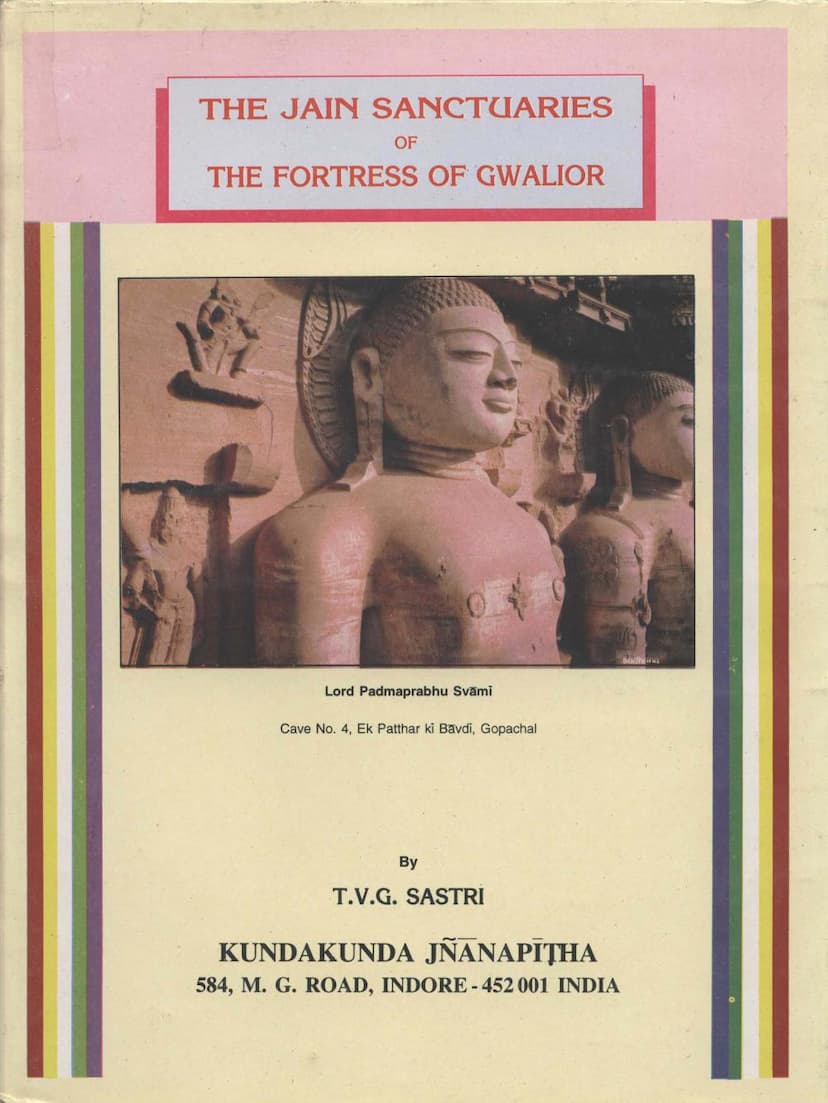Jain Sanctuaries Of The Fortress Of Gwalior
Added to library: September 2, 2025

Summary
This comprehensive book, "The Jain Sanctuaries of the Fortress of Gwalior" by T.V.G. Sastri, published by Kundakunda Jñānapitha, Indore, delves deeply into the rich Jain heritage found within the Gwalior Fort. The author, an accomplished archaeologist with extensive experience, meticulously documents and analyzes the various Jain caves and sculptural traditions present in this historically significant region.
Key aspects covered in the book include:
- Introduction to Gwalior and its Historical Context: The book begins by providing a geographical and historical overview of Gwalior, anciently known as Gopachal. It explores the region's pre-historic remnants, early traditional history, and the crucial medieval period, highlighting the patronage of Jainism by local rulers.
- The Tomar Kings and their Contribution to Jainism: A significant portion of the book is dedicated to the Tomar dynasty, particularly rulers like Dungar Singh and Kirti Singh, who were instrumental in the excavation and installation of numerous Jain sculptures and caves. The author details their political acumen, their devotion to Jainism, and the influence of Jain teachers like Raidhu on their reigns.
- Classification and Description of Jain Caves: The core of the book lies in its detailed classification and description of the Jain caves located in different regions of the Gwalior Fort:
- Ek-Patthar-ki-Bāvdī (South-Eastern Group): This section meticulously describes six groups of caves, including the famous cave tank and individual caves housing Tirthankara images like Parsvanatha. It provides architectural details, iconographic features of the sculptures, and relevant inscriptions, often dating back to the 15th century AD.
- Neminātha Group (North-Eastern Region): This group, perched at a higher elevation and believed to be among the earliest, is dedicated to Neminatha. The book details the temple structures, their entrances, vestibules, and the main deity images, alongside other Tirthankaras and secular scenes, attributing some to the Rastrakuta period and linking them to earlier Gupta traditions.
- Nāmi nātha Group (North-Western Region): Describing caves with a focus on Naminatha and Parsvanatha, this section highlights the architectural features, the grandeur of the Tirthankara images, and the significance of inscriptions, some of which date to the 15th century AD.
- Urwāhī Valley (South-Western Region): This group is famous for its colossal Tirthankara images, including a monumental 17-meter-high figure. The book details the Tritirthika and Dvitirthika caves, manastambhas, and the iconic Bavan Gaj cave complex, noting the vast scale of some of the sculptures.
- Jain Links to Sculptural Traditions: The author explores the evolution of Jain sculptural traditions in the region, referencing sites like Suhania, Panihar, and Barai, and tracing influences from the Gupta period, Rastrakutas, and even Gandhara art. The significance of nudity in Jain iconography and its philosophical underpinnings is also discussed.
- Jain Inscriptions of Gwalior: A crucial chapter is dedicated to the various Jain inscriptions found in and around the Gwalior Fort, primarily focusing on those related to the Tomar kings. These inscriptions provide valuable dating information, details about the installation of images, and the lineage of influential Jain figures and monastic establishments. The role of teachers like Raidhu and the migration of Jain communities from Mathura are highlighted.
- Architecture of Reliefs and Caves: This section delves into the architectural styles of the rock-cut sanctuaries, analyzing the techniques used for reliefs, the structural components of the caves (portico, antarala, garbhagrha), and the representation of temple superstructures (shikharas). The book also discusses the iconography of the Mulanayakas (principal deities), various pithas (pedestals), and the symbolic representations.
- Glossary of Technical Words: A valuable glossary is provided to explain the technical terms used in Jain art, architecture, and iconography, aiding readers in understanding the complex terminology.
- Photographs and Sketches: The book is richly illustrated with photographs and sketches of the caves, sculptures, inscriptions, and architectural details, providing visual evidence to support the textual descriptions.
Overall, "The Jain Sanctuaries of the Fortress of Gwalior" is a monumental scholarly work that offers a detailed and insightful exploration of the significant Jain rock-cut architecture and sculptural art found in Gwalior. It serves as an indispensable resource for scholars, researchers, students, and anyone interested in the rich cultural and religious heritage of Jainism in India.